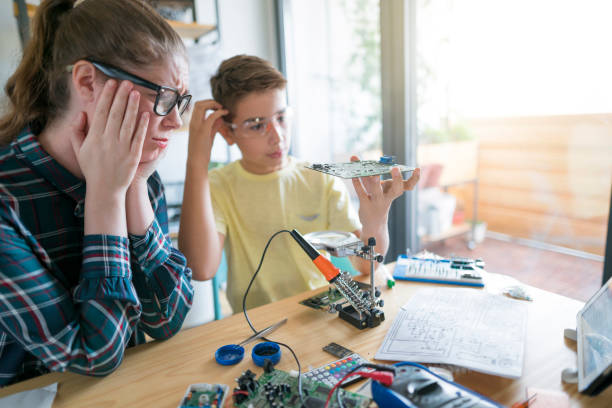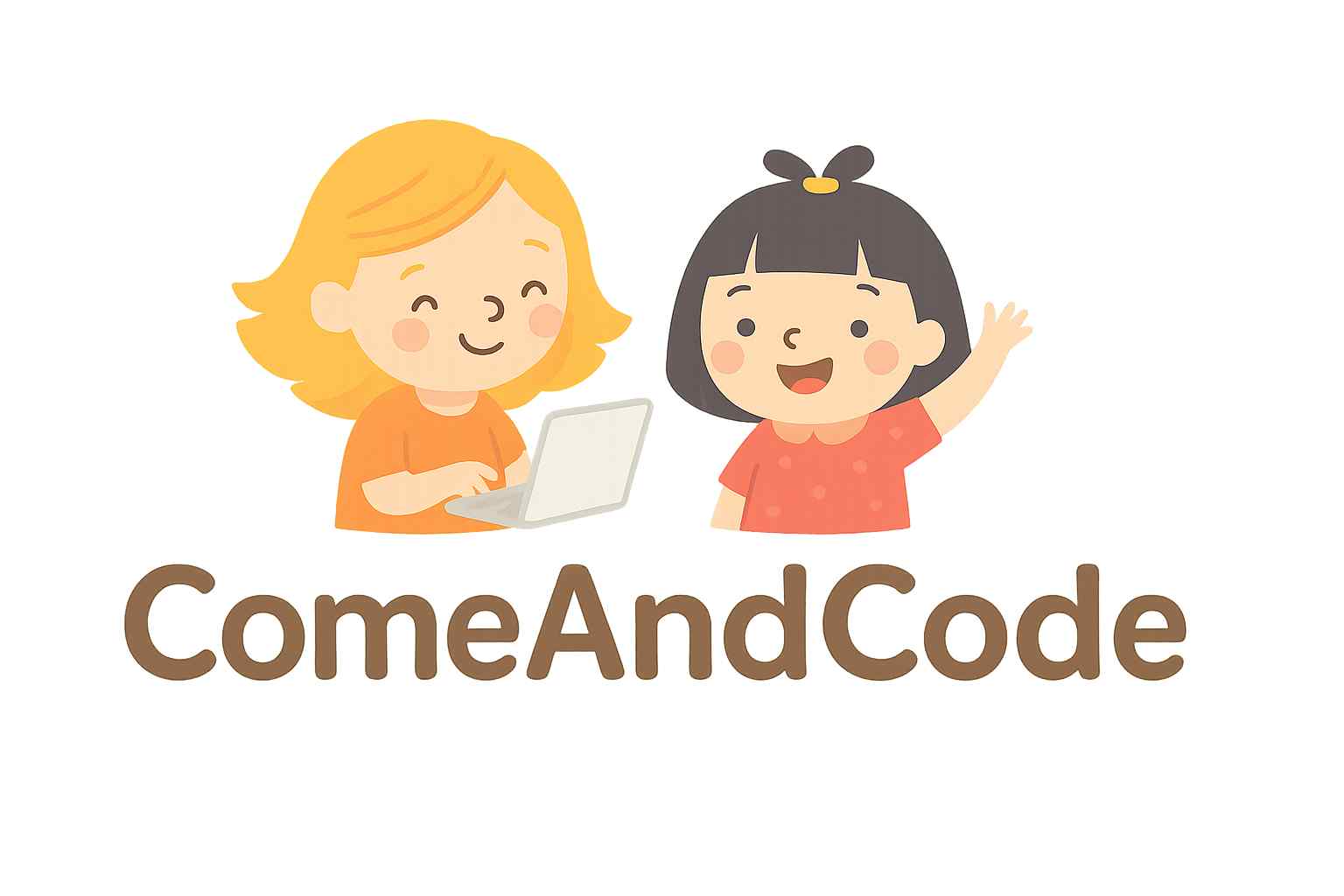The Role of Technology in Sparking Kids technological advancements, children today have access to tools and resources that were unimaginable a few decades ago. Technology has transcended its role as a functional tool to become a powerful medium for fostering creativity and stimulating imagination in young minds. For parents and educators, the challenge lies in leveraging this potential responsibly to inspire kids and help them thrive in an ever-evolving digital landscape.
How Technology Enhances Creativity in Children

1. Access to Infinite Knowledge and Ideas
Technology places a wealth of information and inspiration at children’s fingertips. Platforms like YouTube, educational apps, and interactive websites allow kids to explore diverse subjects, from art and science to music and storytelling. By exposing children to a variety of ideas and concepts, technology expands their creative horizons.
2. Tools for Creative Expression
From graphic design software and animation tools to music composition apps and coding platforms, technology provides children with an array of tools to express themselves creatively. These resources empower kids to bring their imaginative visions to life in ways that were previously unattainable.
3. Collaborative Opportunities
Digital platforms encourage collaboration, enabling children to work together on projects, share ideas, and learn from peers worldwide. Whether it’s co-authoring a story, building a virtual world, or participating in online coding challenges, technology fosters a sense of teamwork and shared creativity.
4. Problem-Solving and Innovation
Creative problem-solving is an essential skill in today’s world. Interactive games, puzzles, and coding platforms like Mini Coders nurture kids’ critical thinking abilities, teaching them how to devise innovative solutions to challenges.
Key Technological Tools Driving Creativity
1. Coding Platforms
Learning to code introduces children to logical thinking and creativity. Platforms such as Scratch and Mini Coders’ proprietary tools help kids design games, animations, and applications, transforming them from passive consumers to active creators.
2. Virtual and Augmented Reality (VR/AR)
VR and AR technologies allow kids to step into immersive worlds, sparking their imagination in unique ways. These tools enable children to experience history, explore science concepts, or create virtual art in three-dimensional spaces.
3. Digital Art and Music Applications
Applications like Procreate for digital drawing or GarageBand for music composition provide kids with endless opportunities to experiment and refine their artistic talents.
4. Robotics Kits
Building and programming robots combine hands-on learning with creativity. Kits like LEGO Mindstorms and other robotics platforms encourage kids to innovate and develop engineering skills while having fun.
5. Online Learning Resources
Interactive learning platforms like Mini Coders integrate storytelling with coding lessons, turning abstract concepts into engaging activities that inspire kids to think outside the box.
How Technology Fuels Imagination
1. Immersive Storytelling
Technology enables new forms of storytelling that immerse children in imaginative worlds. Audiobooks, interactive e-books, and multimedia stories blend visuals, sounds, and narratives, making stories more engaging and memorable.
2. Game-Based Learning
Educational games captivate kids while teaching essential skills. Gamified platforms like Minecraft Education Edition allow children to build virtual worlds, solve puzzles, and explore creativity through play.
3. Exploring Endless Possibilities
Simulations and exploratory apps encourage kids to dream big. Whether designing a city, simulating space travel, or creating virtual ecosystems, these tools allow children to experiment with limitless possibilities.
Balancing Screen Time with Meaningful Engagement
While technology offers incredible opportunities, it’s crucial to strike a balance between screen time and other activities. Parents and educators can ensure kids benefit from technology by following these guidelines:
1. Set Time Limits
Encourage moderate use of screens to prevent over-reliance on digital devices. Create a structured schedule that includes technology-based activities alongside outdoor play and family time.
2. Prioritize Quality Content
Choose apps and platforms that promote creativity, learning, and engagement. Avoid passive consumption, such as endless video streaming or repetitive gaming.
3. Encourage Offline Creativity
Inspire kids to translate their digital creations into the physical world. For instance, they could sketch designs before digitizing them or write stories to later animate.
4. Promote Collaborative Use of Technology
Make technology a shared experience by working on projects together. Collaborative activities strengthen bonds and provide opportunities for guided learning.
The Role of Parents and Educators
Parents and educators play a pivotal role in guiding children’s interactions with technology. By adopting a proactive approach, they can:
1. Introduce Age-Appropriate Tools
Select tools and platforms suitable for a child’s developmental stage. Mini Coders, for example, offers tailored coding programs designed specifically for young learners.
2. Provide Encouragement and Support
Celebrate a child’s digital achievements, whether it’s completing a coding challenge or creating digital art. Positive reinforcement builds confidence and motivation.
3. Teach Digital Literacy
Help children understand the ethical and safe use of technology. Teach them to evaluate online content critically and to use tools responsibly.
4. Lead by Example
Model a balanced approach to technology. When parents and teachers demonstrate responsible use, children are more likely to adopt similar habits.
Success Stories: Kids Thriving Through Technology

Many young innovators have achieved remarkable success through their creative use of technology. From designing award-winning apps to developing innovative solutions for social challenges, children worldwide are proving the transformative power of imagination fueled by digital tools.
For instance, Mini Coders has seen numerous young learners develop practical applications, combining creativity with programming skills to solve real-world problems. These achievements showcase how technology can inspire the next generation of creators and thinkers.
Future Prospects: Technology and Creativity
As technology continues to evolve, its role in fostering creativity will only grow. Emerging fields like AI, 3D printing, and bioengineering promise new opportunities for children to explore and innovate. Platforms like Mini Coders are at the forefront, preparing kids to navigate and shape this exciting future.
Conclusion
Technology is a powerful enabler of creativity and imagination for children. By providing access to innovative tools, fostering collaborative environments, and encouraging creative exploration, it empowers kids to dream, design, and create. Brands like Mini Coders are paving the way for a generation of young minds ready to embrace the digital age while nurturing their creativity. With the right guidance and tools, children can harness technology to unlock their full potential, turning imaginative ideas into reality.
